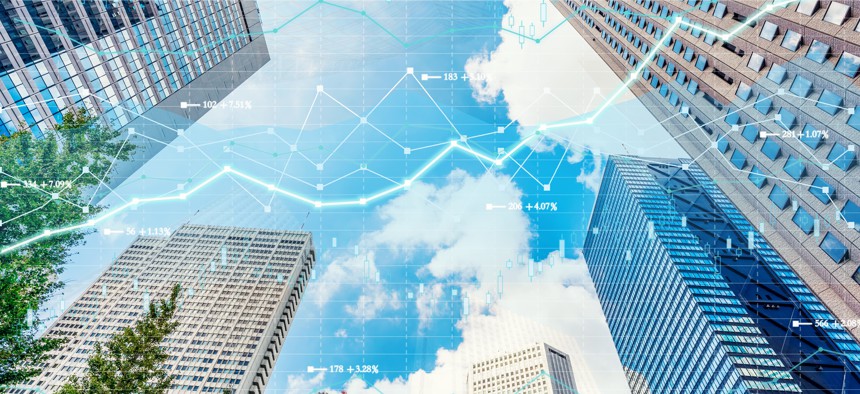How one state measures post-pandemic recovery

GettyImages/ MarsYu
Economic leaders in New Jersey can see indicators and contextualize metrics with a solution that combines government, geographic and third-party economic data into an interactive dashboard.
New Jersey’s Office of Information Technology has turned to data to get a better handle on the state’s post-pandemic economy and determine how best to deploy American Rescue Plan Act (ARPA) funds.
The state went live last month with Tyler Technologies’ Economic Intelligence solution, which combines consumer spending, mobility and small-business data from aggregators such as SafeGraph and Affinity Solutions with existing data on permitting, business licensing, and property and sales tax revenue collection, for instance, in Tyler’s Data and Insights platform.
To be useful, the data must be up-to-date and granular, meaning at the industry-sector level. “Are people in our community spending their money on retail? Are they spending it on health and fitness?” said Saf Rabah, vice president of data solutions at Tyler. “From the perspective of local government leaders, it’s important to pinpoint those businesses or those groups of businesses that may be experiencing a surge or a downturn in economic activity.”
The data must also be granular at the geographic level, so Economic Intelligence looks at it at the census track level. “We also have the opportunity to tie in Census data and marry it to this economic data so we can understand big, important issues such as equity,” Rabah said.
The solution surfaces all the economic data in an out-of-the-box dashboard that lets users drill through indicators and contextualize metrics. For instance, a city council member can assess the impact of a program to support restaurants, or an agency analyst can look at cities, counties or the state to see changes in year-over-year consumer spending across several categories.
“The pandemic has significantly impacted small business revenue and consumer spending habits, and we needed a tool that would help us easily analyze how these metrics have impacted our state’s overall economic picture,” Poonam Soans, New Jersey’s chief data officer, said in a press release. Economic Intelligence “gives our leadership a single, comprehensive view of the critical third-party data that is central to our economic recovery and understanding the ways in which New Jersey’s recovery from COVID-19 progresses.”
The state estimated in 2021 that it lost 30% of its small businesses in 2020. New Jersey extended its fiscal year by three months in 2020 because of revenue shortfalls, which officials said in August 2020 could hit $20 billion by the end of 2021.
Through ARPA’s Coronavirus Local Fiscal Recovery Fund, New Jersey counties and municipalities will get $3.6 billion – funding that must be tracked and accounted for to ensure that it is being used responsibly and within the act’s requirements.
The idea behind Economic Intelligence is to bridge the gap between the availability of economic data at the federal and local levels, Rabah said, while enabling all governments to gain access to such information without needing an analyst to create reports.
“We saw an opportunity to bridge the gap and provide economic signals in an easy-to-consume, easy-to-access, completely out-of-the-box experience for customers who otherwise would not get those signals working for them,” he said.
But tools like Economic Intelligence have utility beyond the health crisis and related funding, Rabah added. Every city, county and state has an economic development plan that includes investments, resource allocation and tracking funds. To support that, officials must be able to understand what industries or communities need the most help and what results came of any intervention.
“What we found is that that data is just useful pre-pandemic, post-pandemic and probably in perpetuity because it provides those rich signals” about where people are spending money, what they’re buying and the health of the small-business community, he said. That kind of information – even about how are people and cars moving about -- can affect policy decisions about transportation, parking and urban design, he said.
Stephanie Kanowitz is a freelance writer based in northern Virginia.
NEXT STORY: NYC launches climate dashboard





